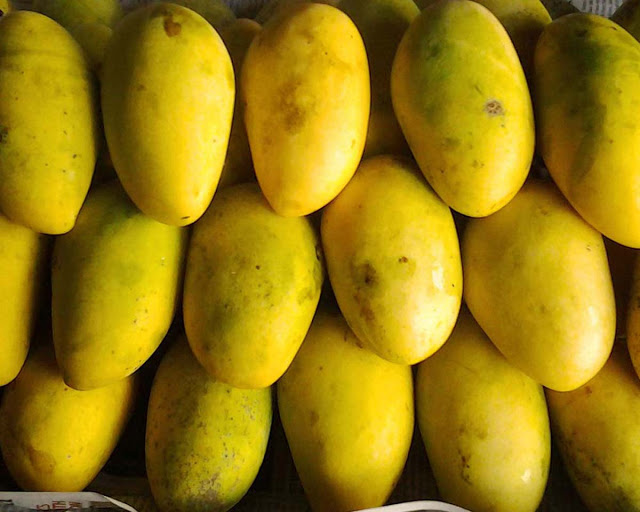Succulent, meaty, sweet, nutritious and deliciously tempting, these are just some words to describe Philippine Mangoes. Mango or mangga in Filipino, is the national fruit of the Philippines and is then third most important fruit crop of the country next to banana and pineapple. In Philippines alone, different varieties of mangoes grow which locals enjoy tremendously. The most common variety of mango in the Philippines is what Americans refer to as champagne mango. It is also called Manila mango, Ataulfo mango (named after its Mexican grower) and Honey mango. For Filipinos it is manggang kalabaw (carabao mango) while for commercial trade, the Philippine government refers to it as ‘Manila Super Mango’ and is the country’s top export variety and is considered one of the best mango varieties in the world.

Manila Super Mangoes are meant for export, 12 hours after harvesting they go to a factory for Vapor Heat Treatment. In VHT chamber, mangoes stay for about five hours from pre-heating to cooling. No chemicals are sprayed on them; they are merely steamed. In 1995, the Guinness Book of World records listed the Carabao mango variety in the Philippines as the sweetest fruit in the world, specifically the Guimaras mango. Guimaras Island is located in the Western Visayas region in the Philippines.
With its golden color that signifies richness and a heart shape that symbolizes a very important part like in human anatomy made Manila mango to be the national fruit of the country. Mango has been known too as the “Fruit of the Gods”. The Manila mango has a yellow-orange skin and more slender compared to other large mango varieties. The flesh or the meat of manggang kalabaw has an almost velvety buttery texture and really sweet.

For Filipinos, the best way to eat ripe Manila mango is by slicing it lengthwise, making three flat slices, the middle slice containing the large seed. With the outer slices, where the fleshy part is, you either scoop out the flesh with a spoon or make cubes using the “hedgehog” method (make a crisscross grid with a knife), turn the flesh out with your hands and then scrape off the chunks. Furthermore, Filipinos love to eat green , unripe mangoes (manggang hilaw) and dipping it in rock salt or with shrimp paste (bagoong).
Did you enjoy these bits of information? Well, make sure to subscribe to my mailing list to read my latest blog straight from you inbox. Or, follow me on Facebook or Instagram for your newest scoop on The Mixed Culture. Feel free to email me for any questions or comment below.
Con mucho amor,
Imelda❤

Where can İ order bulk Of manggo from philippines.
Hi , I am looking to set a Mango farm in Philippines and to buy Malina mangoes in bulk quantity. Please get in touch at alfa6faa@gmail.com
Pinoy mangos are the BEST. Cebu, Leyte, Panay,…..Luzon, anywhere really. The mangos are DELICIOUS.
Hello.. We have mango trees at home that bear fruits at its season. The fruit weighs up to 1 kilo or more. We are waiting an exclusive buyer every harvest. That those will be ended to a company that makes icecream or for export only. Thank you.
Love eating mangoes the “hedgehog” way and getting my hands all sticky and sweet. Finger lickin’ good! 🙂
can’t blame you, Philippines mangoes are deliciously good 🙂 … up to the last bite;)